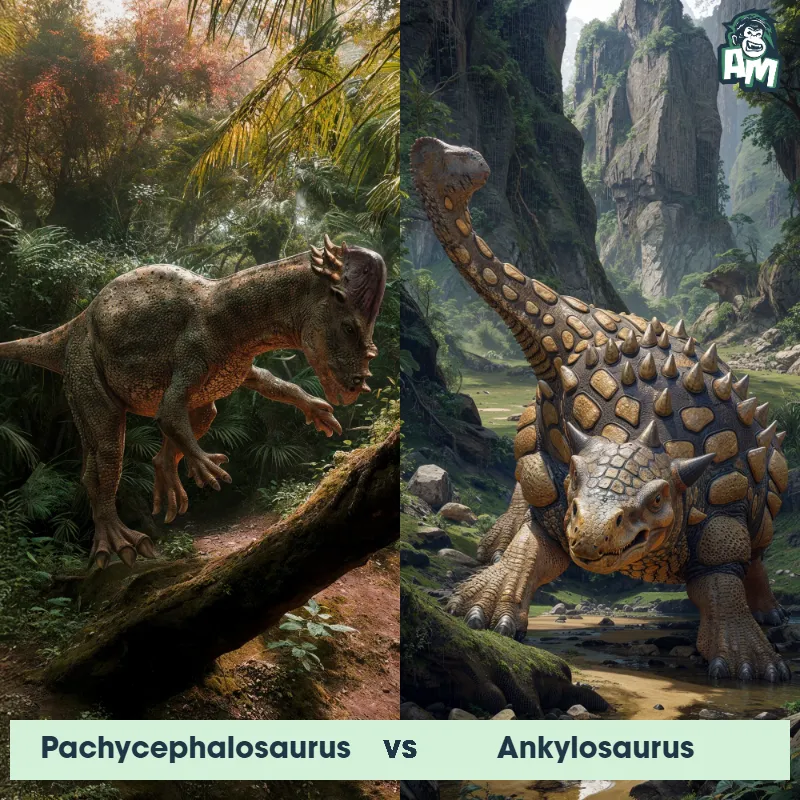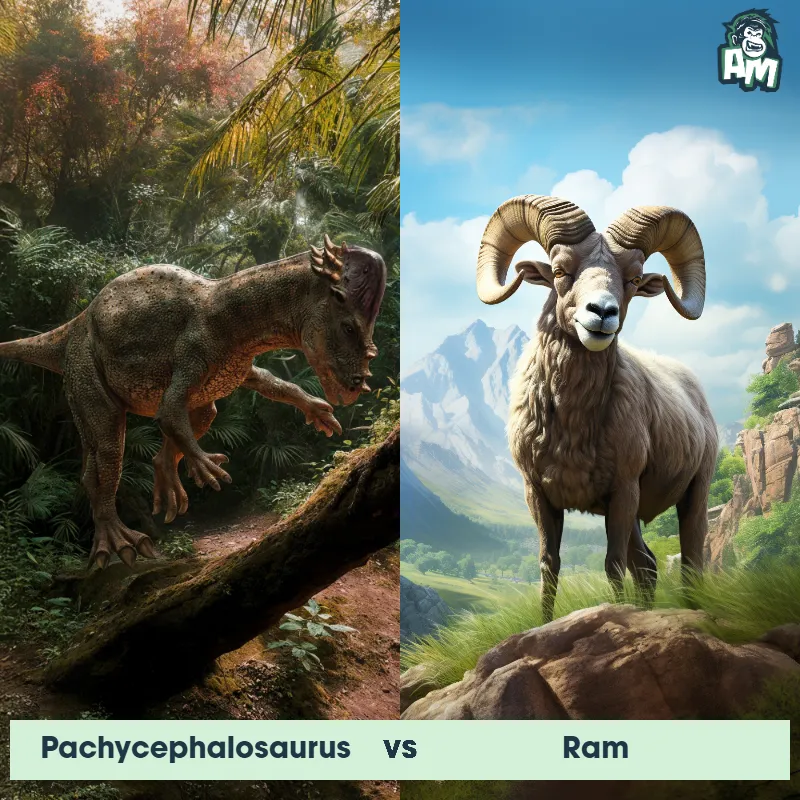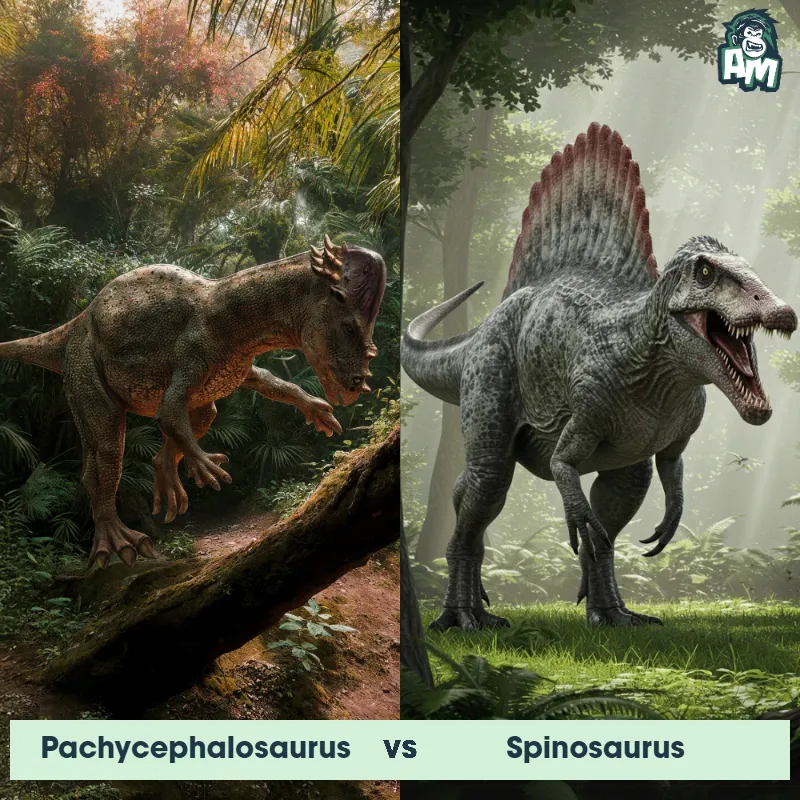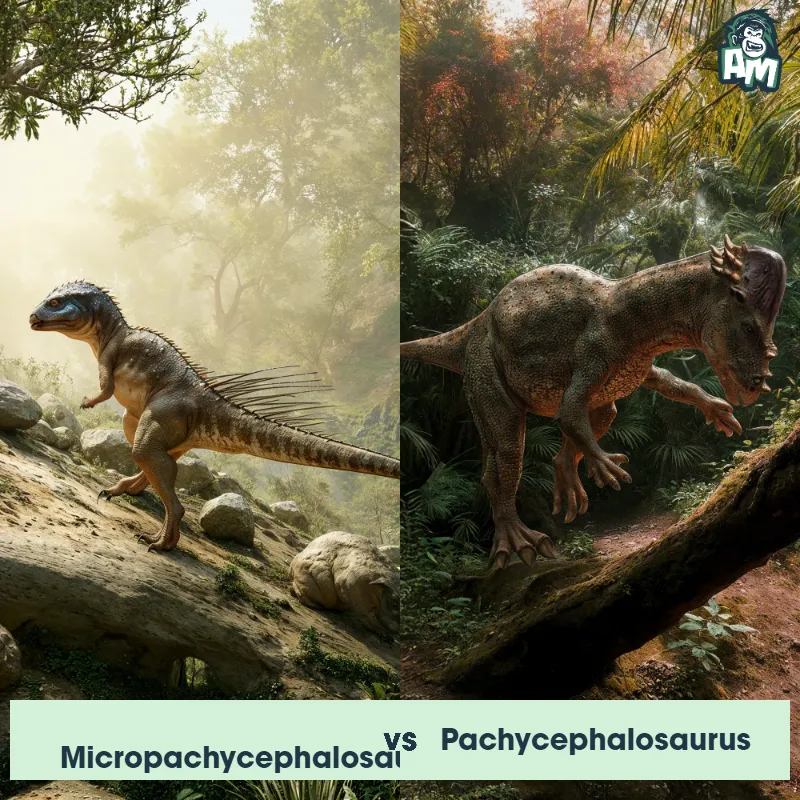The Pachycephalosaurus
Pachycephalosaurus, also known as the "thick-headed lizard," was a herbivorous dinosaur that lived during the Late Cretaceous period. It had a thick skull with a dome-shaped crest that could reach up to 10 inches in height. This crest was likely used for head-butting displays during mating rituals or establishing dominance within the species. Pachycephalosaurus had a small body with a long tail and walked on two hind legs.
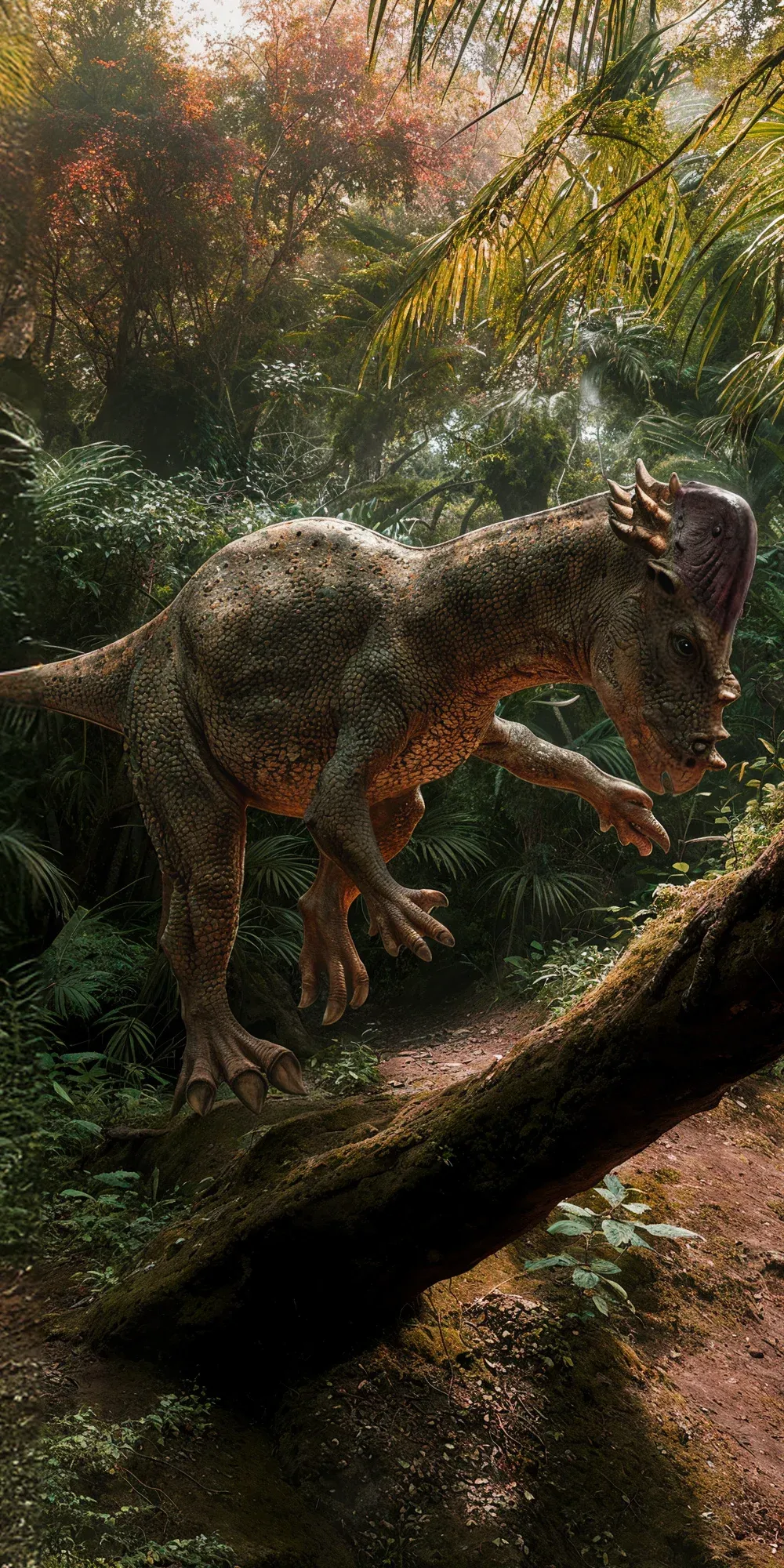
| Pachycephalosaurus | |
|---|---|
| Size | 15 feet tall (4.5 meters) |
| Weight | 1,000 lbs (450 kg) |
| Speed | 15-20 mph (24-32 km/h) |
| Key Strength | Head-butting behavior |
| Biggest Weakness | Weak bite force |
| Scientific Name | Pachycephalosaurus |
| Family | Pachycephalosauridae |
| Habitat | Open woodland areas |
| Geography | North America (specifically present-day Western USA) |
| Diet | Herbivore |
| Lifespan | 10 years - 15 years |

The Pachycephalosaurus
Pachycephalosaurus, also known as the "thick-headed lizard," was a herbivorous dinosaur that lived during the Late Cretaceous period. It had a thick skull with a dome-shaped crest that could reach up to 10 inches in height. This crest was likely used for head-butting displays during mating rituals or establishing dominance within the species. Pachycephalosaurus had a small body with a long tail and walked on two hind legs.
Fun Fact: Pachycephalosaurus is believed to have had one of the thickest skulls among all dinosaurs, which potentially allowed them to engage in head-butting behavior without causing serious harm to themselves.
| Pachycephalosaurus | |
|---|---|
| Size | 15 feet tall (4.5 meters) |
| Weight | 1,000 lbs (450 kg) |
| Speed | 15-20 mph (24-32 km/h) |
| Key Strength | Head-butting behavior |
| Biggest Weakness | Weak bite force |
| Scientific Name | Pachycephalosaurus |
| Family | Pachycephalosauridae |
| Habitat | Open woodland areas |
| Geography | North America (specifically present-day Western USA) |
| Diet | Herbivore |
| Lifespan | 10 years - 15 years |
Pachycephalosaurus Matchups
We use AI to simulate matchups between the Pachycephalosaurus and other animals. Our simulation considers size, strength, and natural predatory behaviors to determine the most likely outcome.
Pachycephalosaurus: Diet, Predators, Aggression, and Defensive Behaviors
What did Pachycephalosaurus eat?
Pachycephalosaurus were herbivores, meaning they primarily ate plants. They grazed on ferns, leaves, and possibly fruits that were available in their habitat.
Did Pachycephalosaurus have any predators?
While it is not completely certain, it is believed that Pachycephalosaurus would have had predators such as large carnivorous dinosaurs like Tyrannosaurus rex. However, they may have also faced threats from smaller predators or scavengers.
Were Pachycephalosaurus aggressive?
Pachycephalosaurus were often depicted as having an aggressive demeanor, especially during mating rituals or territorial disputes. They may have engaged in head-butting behavior to establish dominance or attract mates.
Did Pachycephalosaurus fight?
Pachycephalosaurus were known for their iconic dome-shaped skulls, which they used in combat with each other. They engaged in head-butting contests, possibly to establish dominance within their herd or to defend their territory.
How did Pachycephalosaurus defend themselves?
In addition to using their thick skulls for combat with other Pachycephalosaurus, they may have employed other defensive strategies such as speed or agility to evade predators. They could also have used their strong hind legs to kick or run away from threats.
What was Pachycephalosaurus' biggest weakness in a fight?
Despite their thick skulls and head-butting abilities, Pachycephalosaurus may have been vulnerable to more powerful predators with larger bodies or sharper teeth. Their compact size and relatively limited weaponry compared to some other dinosaurs could have been a weakness in confrontations with certain predators.
Fun Fact: Despite its reputation for being a fierce head-butter, recent studies suggest that Pachycephalosaurus might have used its thick skull for display purposes rather than combat, making their behavior more about bluff than actual physical confrontation.
Fun Fact: Pachycephalosaurus belonged to a group of dinosaurs called pachycephalosaurs, which were known for their thick skulls and bony domes. The name Pachycephalosaurus translates to "thick-headed lizard" in Greek.



